This article is looking into collecting slide rules, the calculating aid that was widely used before the electronic pocket calculator (different field of collecting). From as early as the 17th century in rudimentary form to the 1900’s when they got more common. Used by Einstein and used in space exploration until they became obsolete in the late 1970’s.
Some history on this special calculating tool
There are 2 basic forms for the slide rule, the long rectangular ruler with most of a time a central slide, from which the name “slide rule” emanates. The second shape is round which provides room for longer scales (calculation lines). Mathematician William Oughtred was the inventor of them both, he came up with the rectangular shaped slide rule in 1622 and the circular shape in 1632.
Slide rules in many sizes and shapes
The rectangular slide rules, as shown below, came in various sizes. The one in the middle being the standard size with around 30 cm or 12 inches. This gave room for a wide variety of scales and was the usual size for roughly 1900 – 1950. There were calculations that required more space so in some cases longer slide rules were produced, measuring ca. 50 cm or 20 inches in length. The glass windows were mostly made of glass with 1, 2 or 3 hairlines.
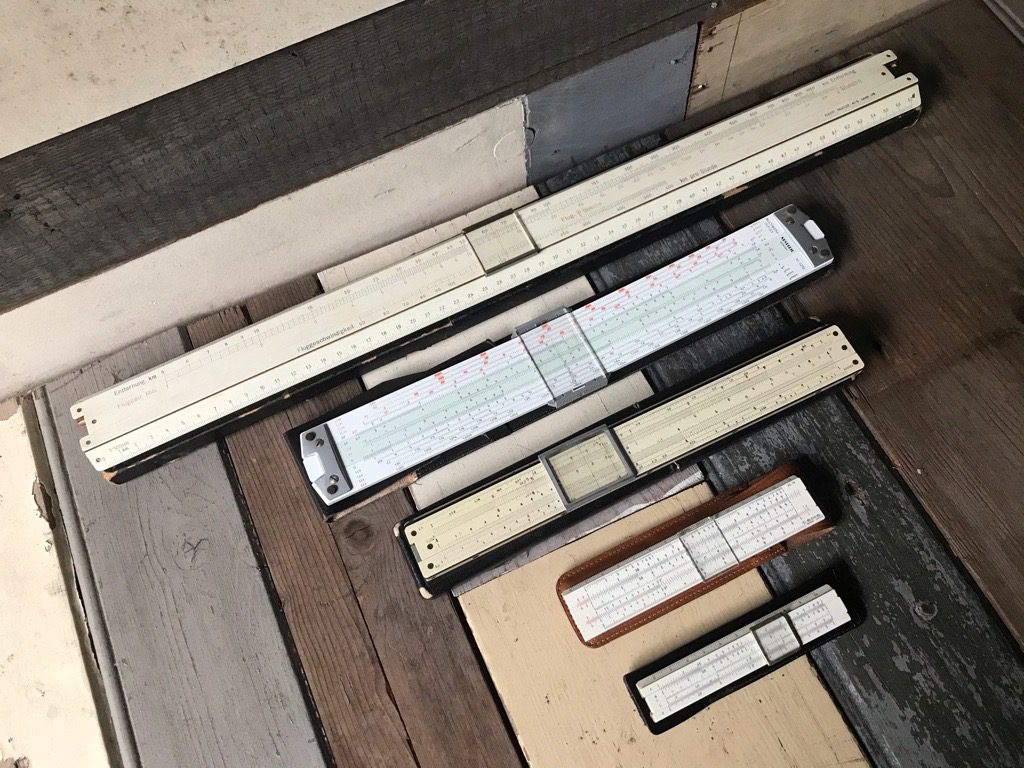
In order to make calculations on the fly possible, also smaller slide rules were produced like the smallest shown above. These were pocket size rules, often with less scales but still very handy for basic calculations. These also served as a marketing tool so these often have an imprint of a business logo or name.
From 1950 on new materials were available making different slide rules possible for all kinds of calculation at a much lower cost. There are century old round models but the ones shown below are from the 1940’s – 1960’s. The round rules were seldom made in wood. The ones below are made of metal, plastic or a combination. This had to do with the durability. A nice example of a wooden one can be found here: made by Emil Tröger.

collectable circular slide rules
Again these circular slide rules came in various sizes, depending on the room needed for the scales. Or in case of the slide rule on the right hand top side, based on the production methodes. This company produced various round slide rules in the 13 cm or 5 inches diameter in a metal casing.
Collecting slide rules
As with many other fields of collecting, the attractiveness of a slide rule is in the condition. Besides that the amount of scales determines how complex it is. The more complex slide rules were more expensive then the standard versions and as a result these were produced and sold in lower quantities. The difference is seen in the slide rules shown below. The 2 on the top right side show the distinction between a simple and a complex slide rule.
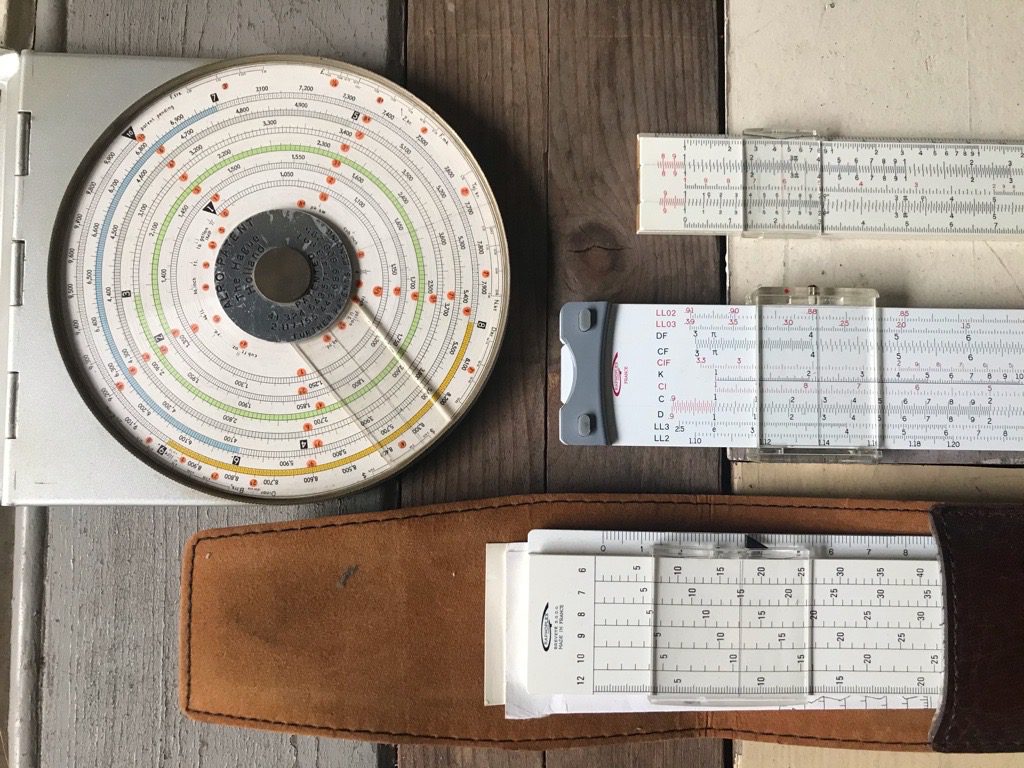 The round slide rule and the slide rule on the bottom are very different because they do not have logarithmic scales. For one collector this could make them less interesting because only very specific and perhaps not so interesting calculations can be performed. For the slide rule collector that collects all different shapes and function could be very interested in these particular ones.
The round slide rule and the slide rule on the bottom are very different because they do not have logarithmic scales. For one collector this could make them less interesting because only very specific and perhaps not so interesting calculations can be performed. For the slide rule collector that collects all different shapes and function could be very interested in these particular ones.
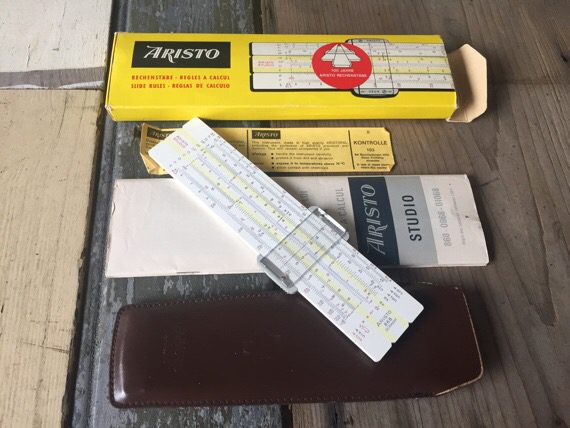
Good example for collecting slide rules
Shown above is a slide rule in full packages as it was sold in the 1960’s. It has not only it’s leather sleeve (or case) but also the manual, the outer box and even a small quality control slip from the factory. Most collectors appreciate these extra’s as bonus or may only collect them as complete packages. In many cases the manuals tell you exactly how to work the specials scales on a particular slide rule so these come in handy as well! Below some other slide rules examples with their complete package I encountered.

Picket N3P-ES full set
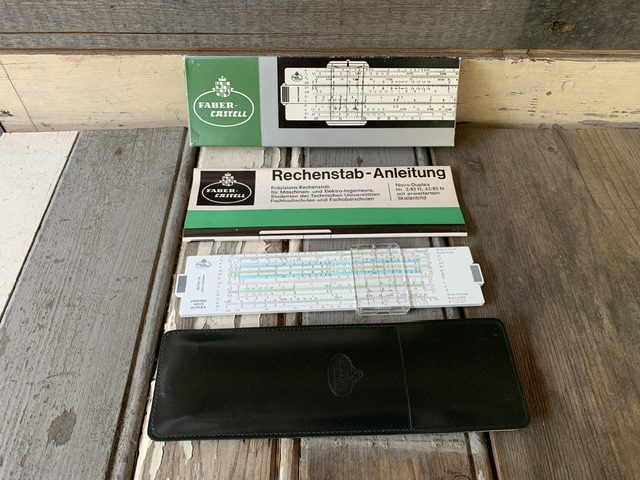
Faber Castell 62/83N full set
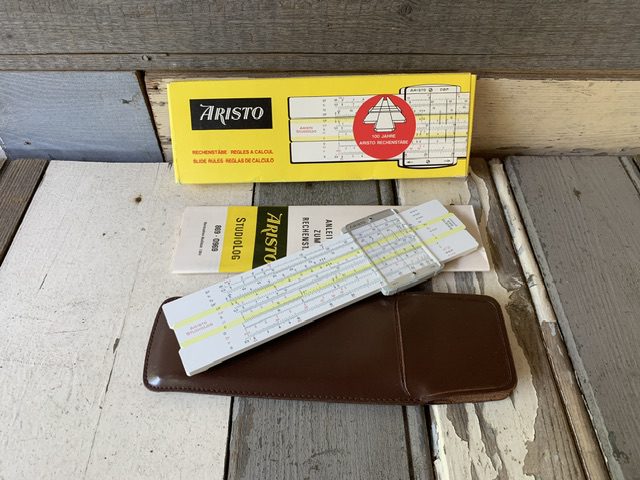
Aristo 869 StudioLog full set
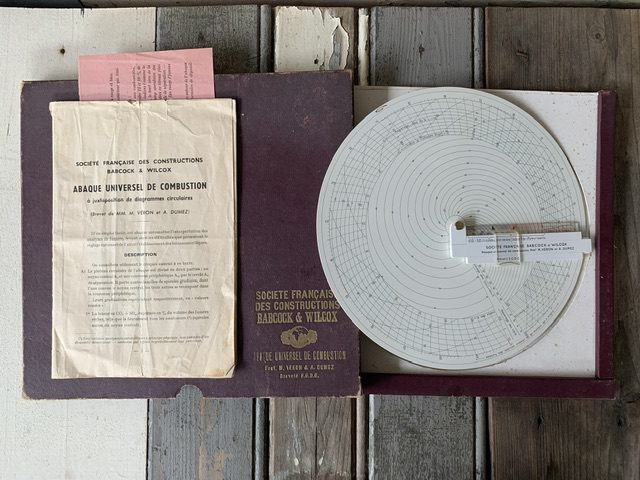
Graphoplex combustion full set

Nestler 130 Multimath Duplex full set
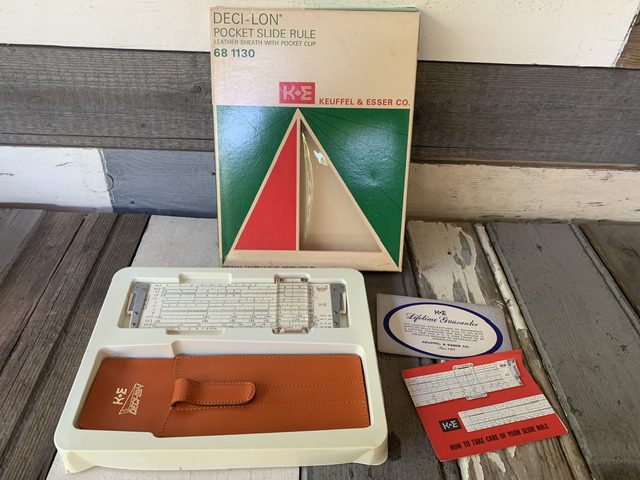
Keuffel + Esser 5″ Deci-Lon 68 1130 full set

Faber Castell 63/83 full set (from the back)
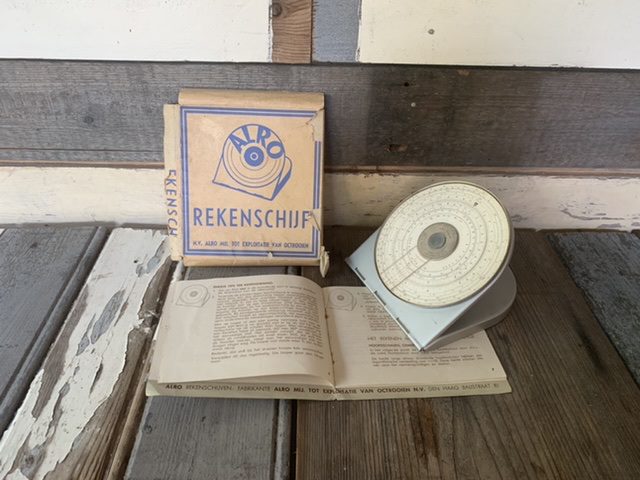
List of slide rule manufacturers
There were many slide rule manufacturers. Here is a list of the names I encounter with a little bit of information the specific brand to give you a quick idea of the particular name on the slide rule.
Aristo by Dennert & Pape: Brand from Germany. They made the biggest variety of slide rules and in the highest number for their model 0903 and 0968 were used in most German schools. Their double length model 1068 should be in every collection.
Alro: A small brand from Holland in the city of The Hague, specializing in round slide rules in metal cases. Their model 200R sold the most and was mandatory in schools in Holland in the 1950’s. Here you find an article about this Alro slide rules from Holland.
Blundell: from England has made many standard but also the most dedicated high quality model for the UK. One of my favorites would be the Cold War slide rule for radiation read outs.
Faber-Castell: From Germany, a name associated with all kinds of drawing equipment made many different slide rules over the years and is still in business today. Their most famous model is the 2/83N which is often called the best in the world.
Graphoplex: a brand from France, also known for their writing and drawing materials and still in business today. Their best know model would be the model 1600 which was also used at many schools.
Sun Hemmi: a brand from Japan that made slide rules to the highest detail, almost always in Bambo. They even produced some for a Dutch company like this Ahrend / Hemmi 260 University model.
Keuffel & Esser: a brand from the USA. Made many different rules. Earlier models in wood, then bamboo and later there last and best rules in plastic. My favorite model would be the Decilon (5 and 10).
Nestler: or Albert Nestler. A brand from Germany that made many different models and were in business until the end of the slide rule era. Their most famous rule must be the 23 Rietz model that was the favorite of many scientists including Einstein.
Pickett: From the USA is known for their metal slide rules, both in white and eye-saver yellow. They made them to last, and that they did. Model N3P-ES is my personal favorite.


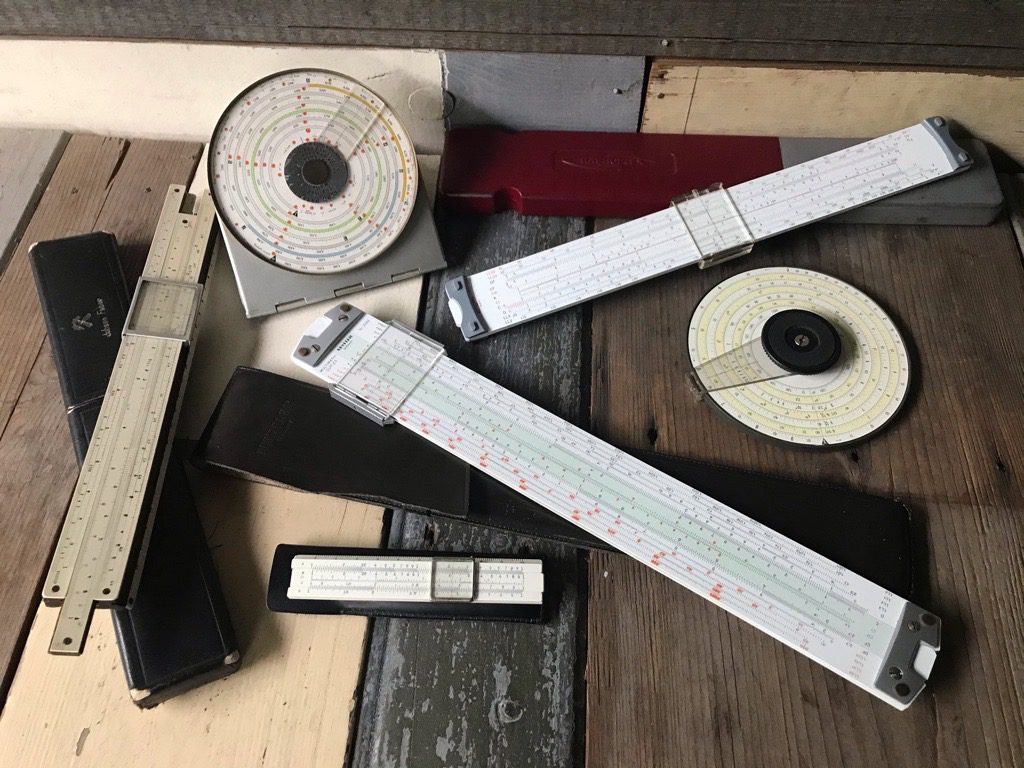
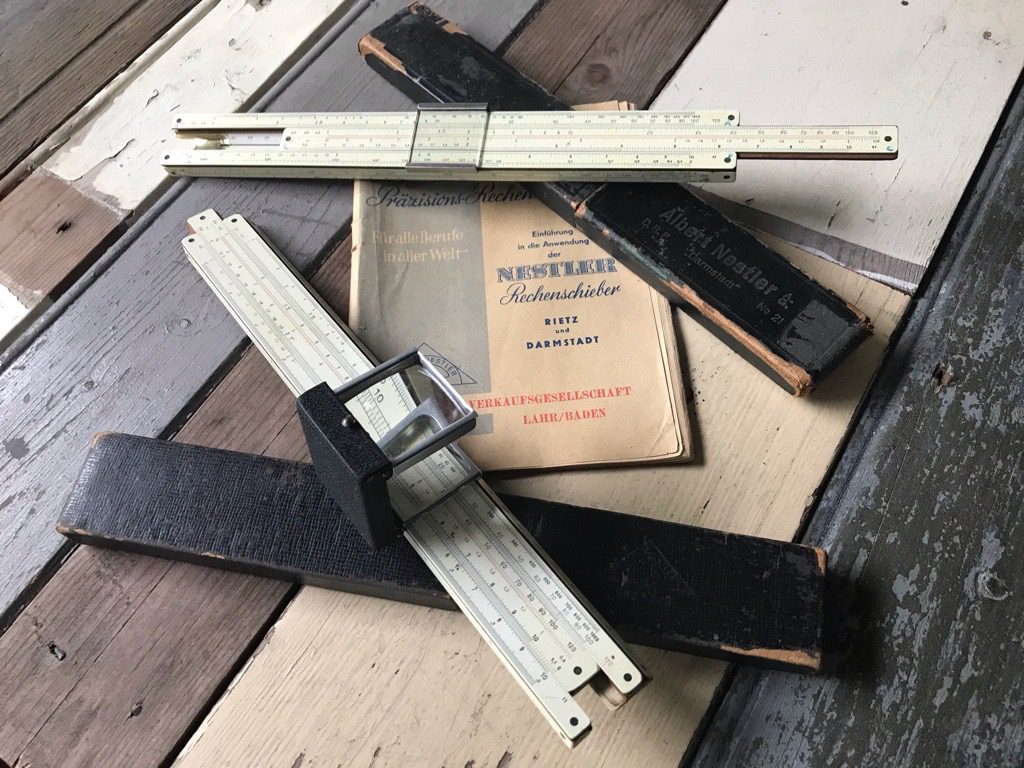

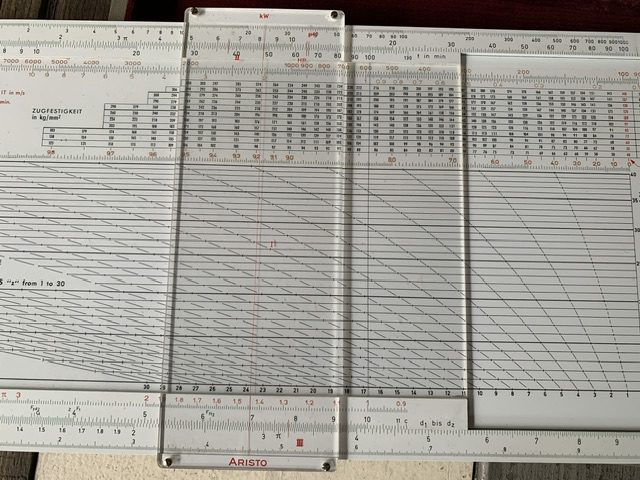
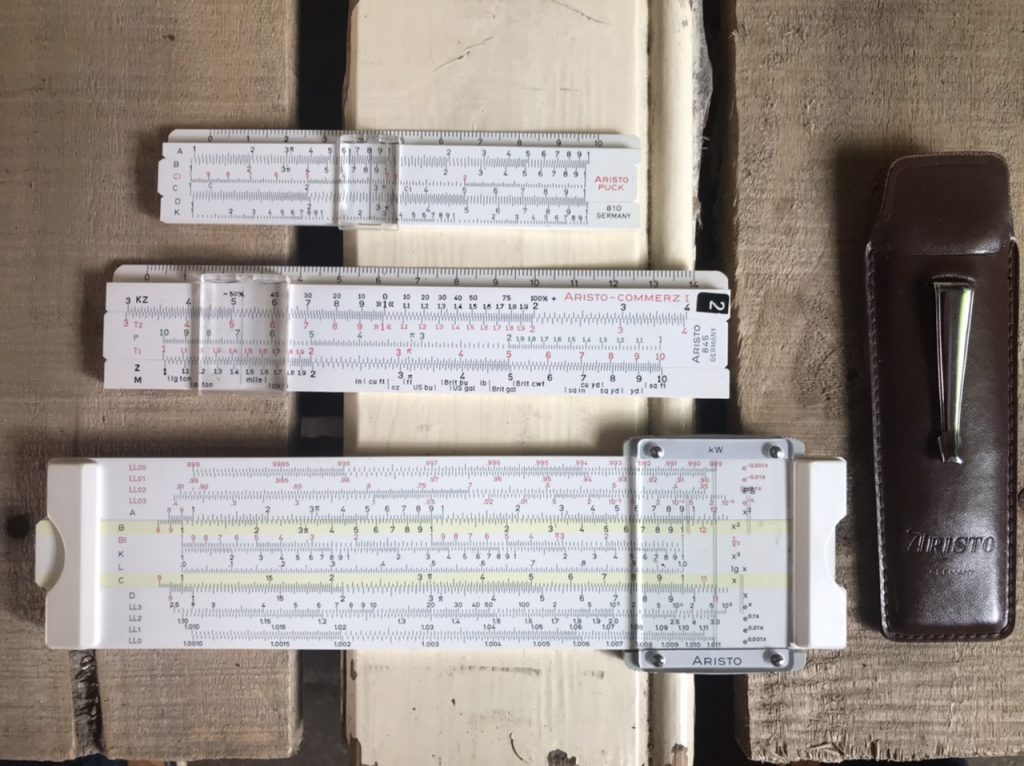
3 thoughts on “Great vintage collection: slide rules”